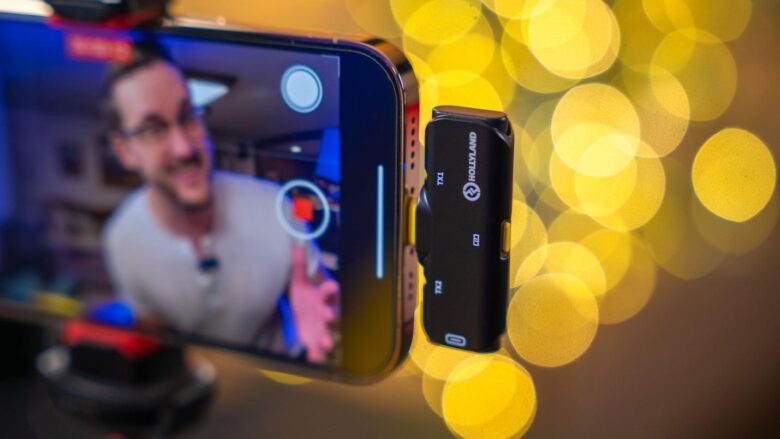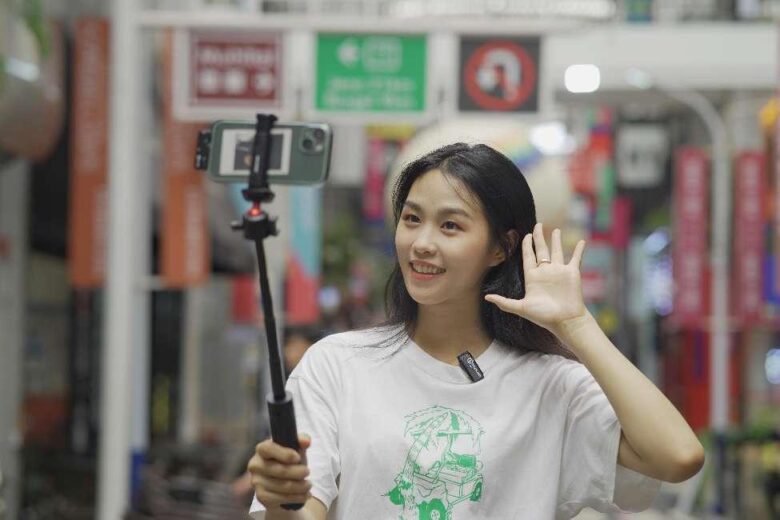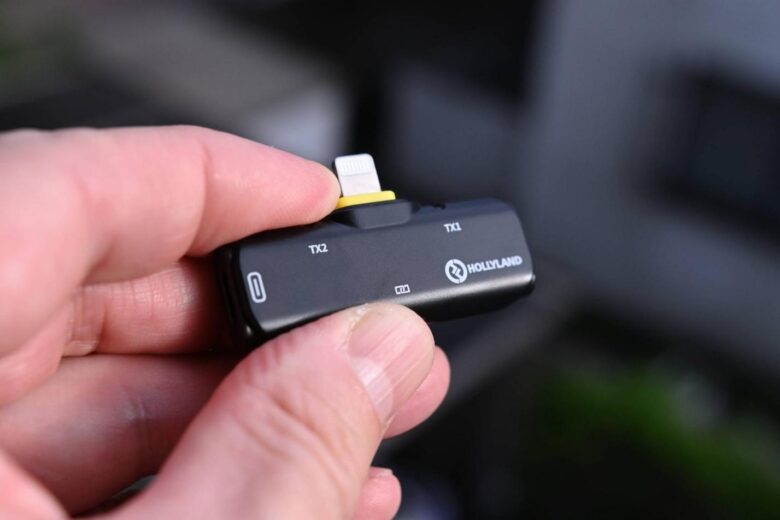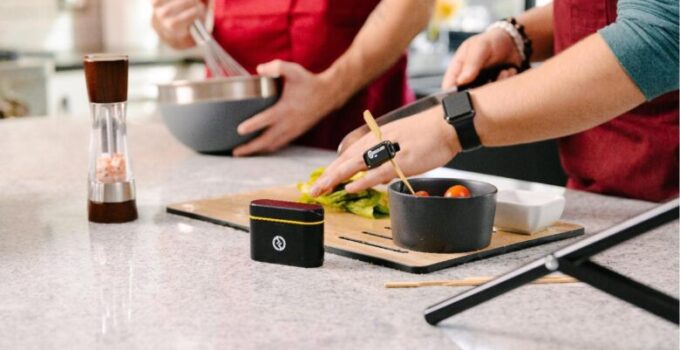When conducting interviews, it is essential to ensure that every word is captured with a high degree of clarity. Because of this, you really need to use a digital wireless microphone that is of good quality while conducting interviews.
Since you make your own decision, there are a few important factors that we will go over in this post that you should keep in mind. If you give careful consideration to each of them, you will be able to choose the one that is most suitable for your recording requirements.
Mobile Phone Interviews on the Go
Mobile phones have revolutionized the way we communicate! Not only can we send text messages and make calls, but we can also use our phones to record interviews. This is especially helpful for journalists who often need to conduct interviews on the go.
With a mobile phone, there’s no need to lug around a bulky tape recorder or worry about running out of batteries. All you need is a lavalier mic for mobile phone such as Hollyland Lark C1.
Simply hit record and start asking questions.
With an external mobile microphone, you can have crystal-clear sound quality. This makes it easy to capture even the slightest nuances in an interviewee’s voice.
Whether you’re a professional journalist or an amateur podcast host, mobile phones make it easier than ever to record high-quality interviews. So, get your equipment, such as a good lavalier mic for Android or a lavalier mic for iPhone that has MFi certification.
Also, the market offers quality choices for wireless microphones, if you know where to look. Discover the top choices for wireless microphones and take your audio game to the next level. Check out our recommendations here: https://www.soundmaximum.com/best-wireless-microphone/.
What to Consider Before Purchasing a Lavalier Mic for Mobile Recording?

1. Your Budget
Determine the price range that you are willing to be able to pay for your digital wireless microphone. There is a significant price disparity between different brands and models.
Because of your budget, you are able to eliminate the microphones that are over your price range, which gives you more time to make the subsequent option.
2. Your Recording Environment
You are responsible for determining where the interview will take place in order to ascertain the polar pattern and external construction requirements that are necessary.
For instance, if you are going to conduct interviews outside, you will need a lavalier mic for mobile phone with a noise cancellation function so that you can pick up the sounds you want while minimizing the noise from the environment.
In addition, the microphone that is used for interviews must have a sturdy construction so that it can continue to function despite the presence of adverse weather.
3. Device to Record the Interview

It is important to know what device you will be using to record your interview; this will allow you to search for an interview microphone that is compatible with your recording equipment.
You may, for instance, go shopping for a camera interview microphone that has either an XLR or TRS connection if you expect to have recordings made on cameras. You can use Hollyland Lark C1 if you are interviewing on the go with your mobile device.
If you’re recording using an iPhone, the good news is that the Lark C1 is MFi certified, which means that the Lark C1 has been verified by Apple to be safe and compatible with your iPhone. So why not consider this competitive lavalier mic for iPhone with the MFi certification? On the other hand, for Android users, the Lark C1 also supports the USB-C interface for connecting to Android devices.
4. Polar Pattern
After determining which kind of interview microphone is most suited to meet your individual requirements, the next step is for you to consider the pickup pattern. In point of fact, there are two formats that perform very well.
The first one has to do with orientation. It is very sensitive to sounds that are coming from the front, but it is able to reject sounds that are coming from the background.
As a result, the artists’ voices will be captured with a high level of clarity. It is an excellent option for an interview that will take place outside.
The other option is to go with a microphone that has an omnidirectional pattern. Because it picks up noises from all directions, it is a useful tool for situations in which many visitors share a microphone. Hollyland Lark C1 has an omnidirectional polar pattern which makes it the best mobile microphone.
5. Sensitivity

A strong proximity sensitivity effect is essential for a professional interview microphone since interviews often include a lot of movement from one person to another.
A high-sensitivity microphone will continue to emit the same volume of sound even if you move around while using it. In addition, there is no need for you to be concerned that the volume will be decreased if you move back or tilt your head.
The Lark C1 is capable of capturing sounds with extraordinarily rich details from all directions over vast frequency ranges, extending from 20 Hz to 20 kHz, thanks to its sample rate and bit depth of 48 kHz and 16 bits, respectively. This results in the delivery of Hi-Fi sound quality.
6. Frequency Response
It refers to the frequency range that may be picked up by a lavalier mic for Android or iPhone. You need to be aware of the audio level of your interview so that you can make the best decisions. After that, you should invest in a microphone that functions well in this frequency band.
7. Maximum SPL
This is the highest sound pressure level (SPL) that a microphone is capable of recording without being distorted. That is to say, the louder noises it can take are directly proportional to the maximum SPL value.
In most cases, a sound pressure level of 100 dB will be enough. You can choose between 100 dB and 120dB if you want the sound quality to be higher. Hollyland Lark C1 is perfect, as it has an SPL of 110 dB.
Takeaway

If you’re on the go, and there you see a famous person—and don’t want to lose the chance of interviewing him, all you have to do is take out the mic for mobile phone and then start interviewing.
It can work with any mobile device—be it Android or iOS. Hence, it offers both solutions in one small compact device.




